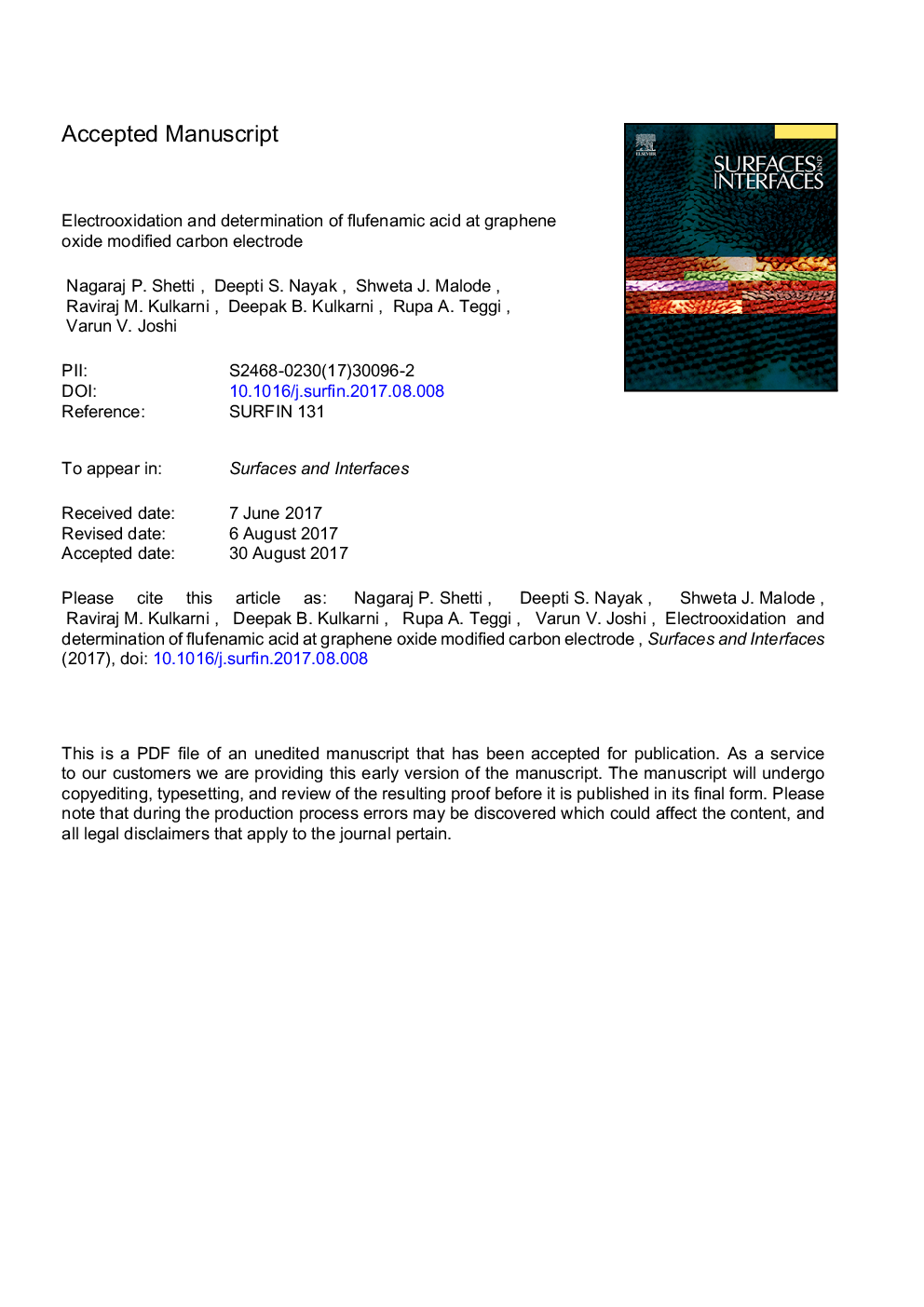| Article ID | Journal | Published Year | Pages | File Type |
|---|---|---|---|---|
| 4985559 | Surfaces and Interfaces | 2017 | 29 Pages |
Abstract
The incredible progress in the application of graphene and its related materials for electrochemical sensor fabrication with superior sensitivity has witnessed in the last decade. With great enviable morphology, thermal/chemical stability, large surface area they are making easy electron transportation without any mediator. In the present work, first we blended graphene oxide (GO) with carbon paste matrix and then so fabricated GOCPE was utilized as a sensor for flufenamic acid (FFA) quantification. The sensor surface morphology was analyzed by atomic force microscopy (AFM) study. The sensitivity, resolution and selectivity of FFA were enriched at GOCPE in pH 4.2 compared to the bare CPE, because of the extraordinary surface characteristics of the modifier. The influence of pH, amount of modifier, accumulation time, scan rate and concentration on the signal enhancement of FFA were studied. The currents obtained from square wave voltammetric (SWV) measurements were linearly associated with FFA concentration. Calibration curve was attained for FFA concentrations in the array of 0.001-0.09 µM with the detection limit of 5.0â¯nM. The analytical application of this chemically modified electrode was employed for the determination of FFA in urine samples.
Related Topics
Physical Sciences and Engineering
Chemical Engineering
Colloid and Surface Chemistry
Authors
Nagaraj P. Shetti, Deepti S. Nayak, Shweta J. Malode, Raviraj M. Kulkarni, Dipak B. Kulkarni, Rupa A. Teggi, Varun V. Joshi,
